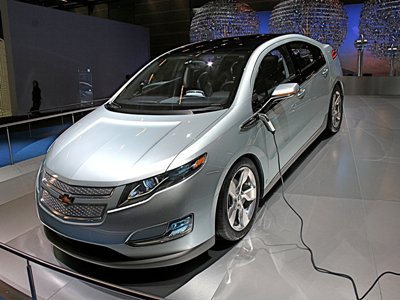Electric Car Sales Still Anemic Despite Overall Growth In Market

US auto sales hit a five-year high for 2012 (a lot of that has to do with Japanese auto manufacturers getting back in gear after being derailed by earthquakes), but the cars the government most wants Americans to buy still aren’t selling very well.
The Chevy Volt is now the best-selling plug-in hybrid car among a very lackluster group.
Volt sales have been relatively strong throughout most of 2012 with GM selling 2,831 units in August; 1,849 units in July; and 1,760 units in June. The trend was not sustained in November, but December was definitely a rebound month. If we look back at December 2011, we discover that sales of the Volt were 1,529 units.
Nissan reported that sales of its electric LEAF were relatively strong in December, with 1,489 units driving off the lots. Recapping recent LEAF sales shows us that Nissan moved a solid 1,539 units in November, nearly identical to October’s 1,579 sales. In December 2011, LEAF sales totaled 954 units.
In terms of 2012 year-to-date numbers, the tally for the Nissan LEAF is 9,819 units. That’s incredibly close (+ 1.5 percent) to 2011’s results, when sales of the LEAF totaled 9,674 units. Meanwhile, the 2012 YTD results for the Chevy Volt ring in at a remarkable 23,461 units. In comparison, General Motors’ Volt sales for all of 2011 tallied only 7,671 units. That’s a year-to-date (2012 versus 2011) increase of 205.8 percent.
The Chevy Volt is now officially the U.S.’s top-selling plug-in vehicle for 2012. In the number two spot is not the Nissan LEAF, but rather the Toyota Prius Plug-In Hybrid.
The article describes Volt sales as “sizzling,” and admittedly 23,641 sales is a big improvement after GM failed to hit its goal of 10,000 sales in 2011, but in comparison to the overall market that’s a tiny number. By comparison, the Honda CR-V (a comparable compact car) sold 281,652 units in 2012.
And the sales jump for Volt (not replicated for the Nissan Leaf) probably had a lot to do with GM slashing prices for the car earlier this year to boost lagging sales.
Put simply, these cars just aren’t very popular. Even with a huge government subsidy of $7,500 for every buyer (not to mention the billions in subsidies poured into subsidizing the manufacture of the cars), these cars just don’t sell.
Maybe because, even with all the subsidies, they’re really expensive and just don’t work that well. Which is about par for the course.
If the government subsidizes something, that’s almost certainly because that something isn’t good enough to sell on its own.







